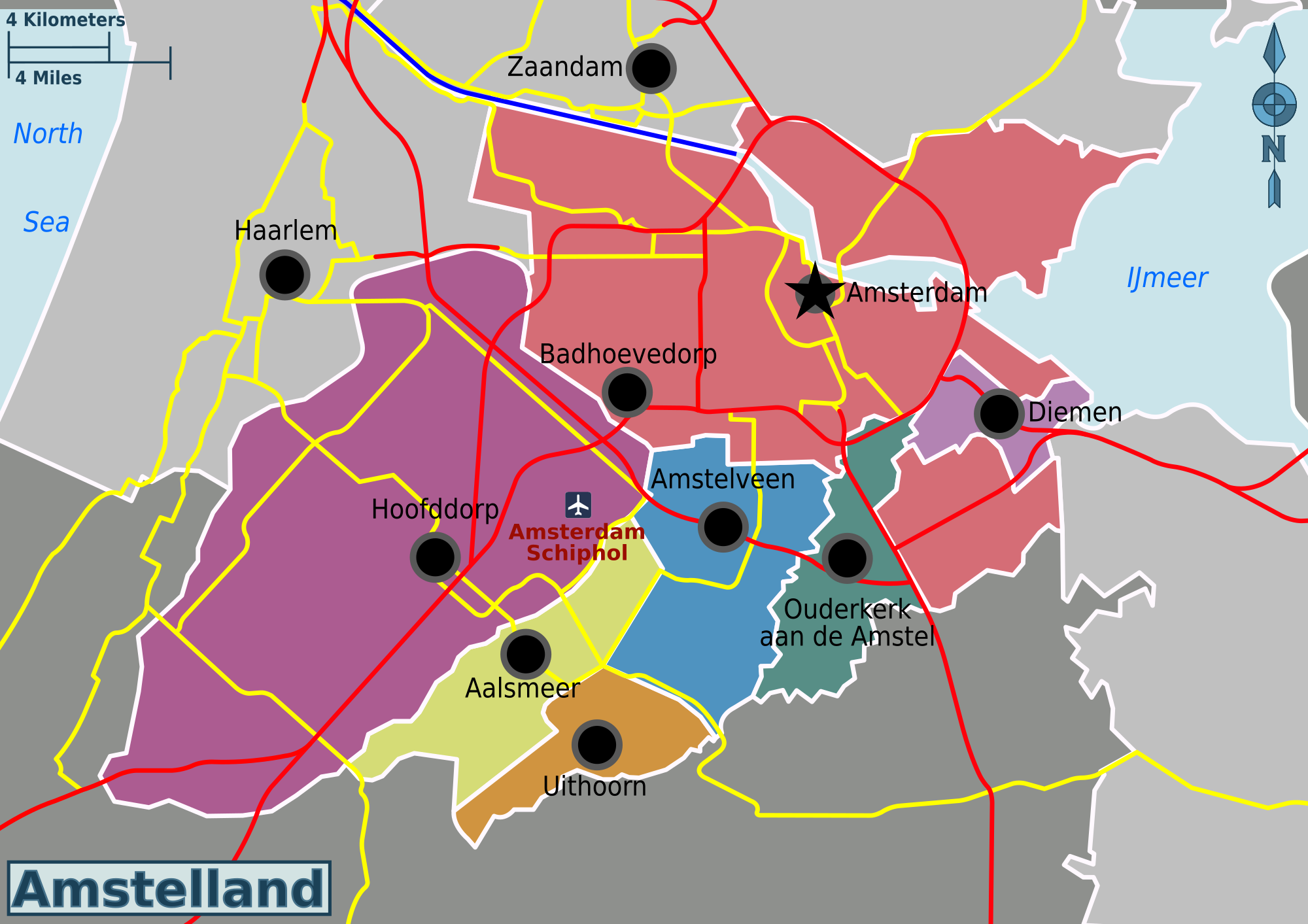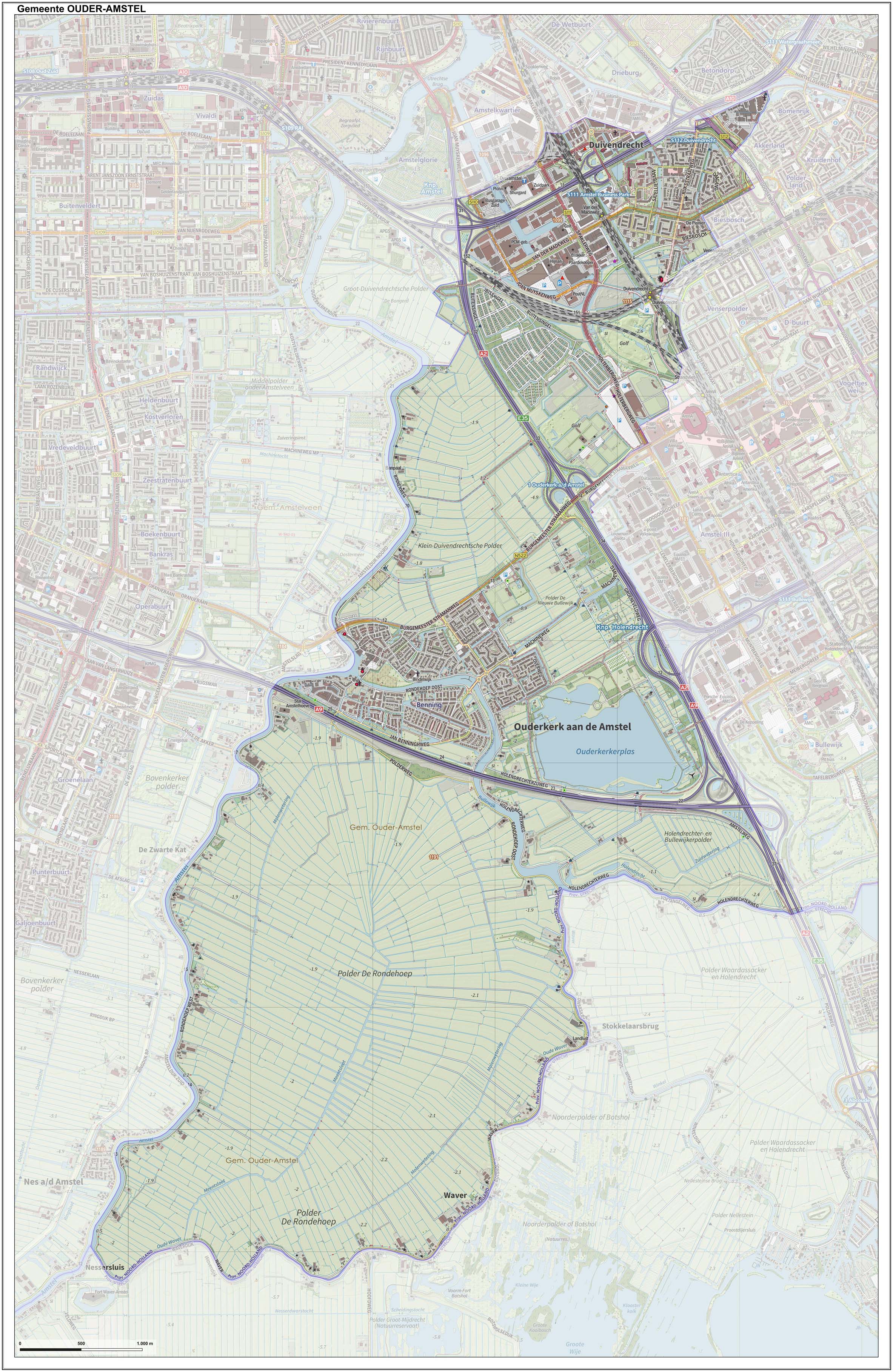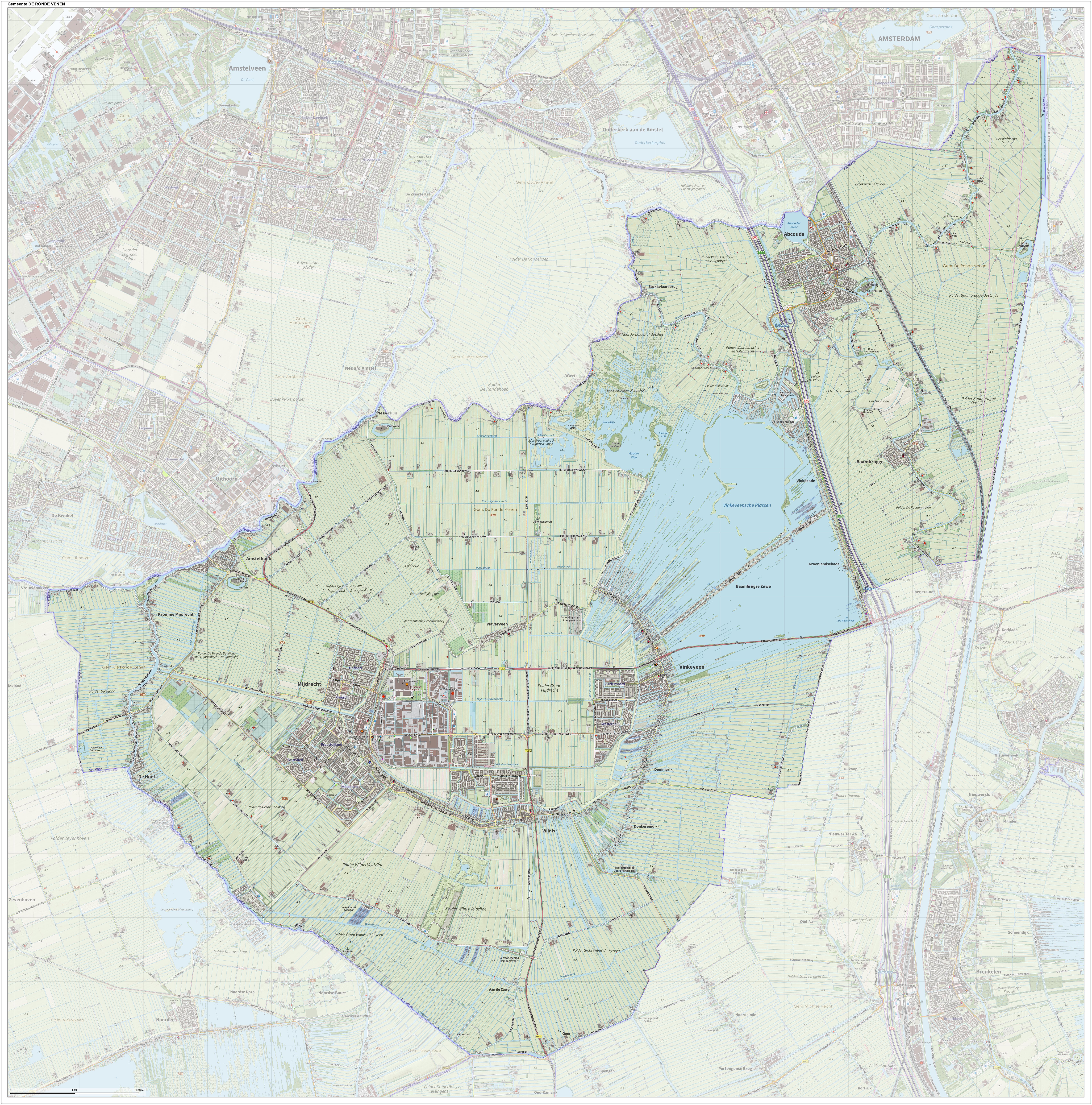|
Amstel
The Amstel () is a river in the province of North Holland in the Netherlands. It flows from the Aarkanaal and Drecht in Nieuwveen northwards, passing Uithoorn, Amstelveen, and Ouderkerk aan de Amstel, to the IJ in Amsterdam. Annually, the river is the location of the Liberation Day concert, Head of the River Amstel rowing match, and the Amsterdam Gay Pride boat parade. Etymology The name ''Amstel'' and the older form ''Aemstel'' are derived from ''Amestelle'', which is a compound of the words '' aam'' or ''ame'' meaning water and '' stelle'' meaning solid, high, and dry ground.G. van Berkel & K. Samplonius,Amsterdam (Amsterdam, NH) (in Dutch), ''Nederlandse plaatsnamen verklaard'', 2018. Retrieved on 10 October 2020.Nederlandsche plaatsnamen (in Dutch), '' |
Amstelveen
Amstelveen () is a municipality in the province of North Holland, Netherlands with a population of 92.353 as of 2022. It is a suburban part of the Amsterdam metropolitan area. The municipality of Amstelveen consists of the historical villages of Bovenkerk and Nes aan de Amstel. In addition, as well as Downtown Amstelveen (Dutch: ''Amstelveen stadshart''), the following neighbourhoods have been recently built: Westwijk, Bankras-Kostverloren, Groenelaan, Waardhuizen, Middenhoven, Randwijk, Elsrijk and Keizer Karelpark. The name comes from the Amstel, a local river (as does the name Amsterdam) and , meaning fen, peat, or moor. Amstelveen houses the international headquarters of Dutch national airline KLM (although it is slated to leave for Schiphol in 2024) and KPMG, one of the Big Four accounting firms. The Cobra Museum is also located in Amstelveen. History During the French occupation between 1810 and 1814, Amstelveen was the capital of a canton in the French department Zuy ... [...More Info...] [...Related Items...] OR: [Wikipedia] [Google] [Baidu] |
Amstelland
Amstelland is the area along the river Amstel in the Netherlands, beginning in South Holland and running north towards Amsterdam in southern North Holland. History Amstelland's history is inextricably linked with the Amstel river and the growth of Amsterdam. Its history is essentially the history of Amstelveen, Aalsmeer, Ouderkerk aan de Amstel and the other towns. The river was important in medieval times as a waterway leading to the south and to Utrecht. The oldest settlement in the area was Ouderkerk aan de Amstel, which dated from the 11th century (and thus is older than Amsterdam). Amsterdam at this time was a small fishing village at the mouth of the Amstel. A part of Utrecht, this area was part of the seigniory ( heerlijkheid) of the Van Aemstel family. At one point the right bank of the Amstel was being referred to as the "Old Amstel" (Ouder-Amstel), the left bank as the "New Amstel" (Nieuwer-Amstel). Peat was an important source of fuel at the time. The fens around th ... [...More Info...] [...Related Items...] OR: [Wikipedia] [Google] [Baidu] |
Amsterdam
Amsterdam ( , , , lit. ''The Dam on the River Amstel'') is the Capital of the Netherlands, capital and Municipalities of the Netherlands, most populous city of the Netherlands, with The Hague being the seat of government. It has a population of 907,976 within the city proper, 1,558,755 in the City Region of Amsterdam, urban area and 2,480,394 in the Amsterdam metropolitan area, metropolitan area. Located in the Provinces of the Netherlands, Dutch province of North Holland, Amsterdam is colloquially referred to as the "Venice of the North", for its large number of canals, now designated a World Heritage Site, UNESCO World Heritage Site. Amsterdam was founded at the mouth of the Amstel River that was dammed to control flooding; the city's name derives from the Amstel dam. Originally a small fishing village in the late 12th century, Amsterdam became a major world port during the Dutch Golden Age of the 17th century, when the Netherlands was an economic powerhouse. Amsterdam is th ... [...More Info...] [...Related Items...] OR: [Wikipedia] [Google] [Baidu] |
Ouderkerk Aan De Amstel
Ouderkerk aan de Amstel () is a town in the province of North Holland, Netherlands. It is largely a part of the municipality of Ouder-Amstel; it lies about 9 km south of Amsterdam. A small part of the town lies in the municipality of Amstelveen. It is connected to Amsterdam by the river Amstel. There is another village called Ouderkerk in South Holland, Ouderkerk aan den IJssel. History The village was first mentioned in 1308 as Ouderkerken, and means "old church". Old was probably added to distinguish from another village, however it is not clear which village. A candidate is Nieuwerkerk which disappeared in the Haarlemmermeer, but it can also refer to Amstelveen. Ouderkerk developed at the confluence of the Bullewijk into the Amstel river. The castle of the van Amstel family was probably located on across the present church, however it was destroyed in 1204. From the 17th century onwards, estates were built in Ouderkerk aan de Amstel by the Amsterdam merchants. Main sight ... [...More Info...] [...Related Items...] OR: [Wikipedia] [Google] [Baidu] |
Ouder-Amstel
Ouder-Amstel () is a municipality in the Netherlands, in the province of North Holland. Population centres The municipality of Ouder-Amstel consists of the following cities, towns, villages and/or districts: Duivendrecht, Ouderkerk aan de Amstel, Waver. Topography ''Dutch Topographic map of the municipality of Ouder-Amstel, June 2015'' Local government The municipal council of Ouder-Amstel consists of 15 seats, which are divided as follows: Radio station The local radio station for Duivendrecht is Jamm fm 104.9 Smooth & Funky. Notable people * Gijsbrecht IV of Amstel (ca.1235–ca.1303) a powerful lord and member of the Van Aemstel family. * Wim Eijk (born 1953 in Duivendrecht) a Dutch prelate of the Catholic Church, a cardinal and Archbishop of Utrecht * Femke Wolting (born 1970 in Ouder-Amstel) a Dutch independent new media producer [...More Info...] [...Related Items...] OR: [Wikipedia] [Google] [Baidu] |
Van Amstel Family
The van Amstel family ( nl, Heren van Amstel) was an influential dynasty in the medieval Netherlands from the twelfth until the fourteenth century. The family developed the Amstelland and held the stewardship in the ecclesiastical districts in the northwest of the Nedersticht (largely the current province) of Utrecht, first in the name of the bishop of Utrecht and later the count of Holland. History Wolfger van Amstel is named in 1105 as a ''scultetus'' (bailiff) of Amestelle (Amstelland). His son Egbert built a small castle or keep (actually more just a fortified manor house) in Ouderkerk aan de Amstel, probably on the spot where the Sefardi cemetery Beth Haim was later sited. In 1204, this building was destroyed by the invading Kennemers. Gijsbrecht II was named the first dominus (lord) of Amestelle in 1226, but came into conflict with the bishop of Utrecht and was led captive into the city of Utrecht behind a horse in 1252. Arnoud of Amstel, a son of Gijsbrecht III, built ... [...More Info...] [...Related Items...] OR: [Wikipedia] [Google] [Baidu] |
Van Amstel (family)
The van Amstel family ( nl, Heren van Amstel) was an influential dynasty in the medieval Netherlands from the twelfth until the fourteenth century. The family developed the Amstelland and held the stewardship in the ecclesiastical districts in the northwest of the Nedersticht (largely the current province) of Utrecht, first in the name of the bishop of Utrecht and later the count of Holland. History Wolfger van Amstel is named in 1105 as a ''scultetus'' (bailiff) of Amestelle (Amstelland). His son Egbert built a small castle or keep (actually more just a fortified manor house) in Ouderkerk aan de Amstel, probably on the spot where the Sefardi cemetery Beth Haim was later sited. In 1204, this building was destroyed by the invading Kennemers. Gijsbrecht II was named the first dominus (lord) of Amestelle in 1226, but came into conflict with the bishop of Utrecht and was led captive into the city of Utrecht behind a horse in 1252. Arnoud of Amstel, a son of Gijsbrecht III, built ... [...More Info...] [...Related Items...] OR: [Wikipedia] [Google] [Baidu] |
Hermitage Amsterdam
Hermitage Amsterdam is a branch museum of the Hermitage Museum of Saint Petersburg, Russia, located on the banks of the Amstel river in Amsterdam. The museum is located in the former Amstelhof, a classical style building from 1681. The dependency displayed small exhibitions in the adjacent Neerlandia Building from 24 February 2004 until the main museum opened on 19 June 2009. It is currently the largest satellite of the Hermitage Museum, with a total area of and fits with the museum's plan to make its collections accessible to more people. The exhibition area covers and is contained within two large exhibition halls and smaller exhibition rooms. The remaining space holds lecture halls, offices and staff accommodations and a restaurant. History The structure opened in 1682 as a retirement home for elderly women under the name Diaconie Oude Vrouwen Huys ( en, Deanery Home for Old Women) on the east bank of the river Amstel. Beginning in 1817, the facility housed both elderly m ... [...More Info...] [...Related Items...] OR: [Wikipedia] [Google] [Baidu] |
North Holland
North Holland ( nl, Noord-Holland, ) is a province of the Netherlands in the northwestern part of the country. It is located on the North Sea, north of South Holland and Utrecht, and west of Friesland and Flevoland. In November 2019, it had a population of 2,877,909 and a total area of , of which is water. From the 9th to the 16th century, the area was an integral part of the County of Holland. During this period West Friesland was incorporated. In the 17th and 18th century, the area was part of the province of Holland and commonly known as the Noorderkwartier (English: "Northern Quarter"). In 1840, the province of Holland was split into the two provinces of North Holland and South Holland. In 1855, the Haarlemmermeer was drained and turned into land. The provincial capital is Haarlem (pop. 161,265). The province's largest city and also the largest city in the Netherlands is the Dutch capital Amsterdam, with a population of 862,965 as of November 2019. The King's Commissi ... [...More Info...] [...Related Items...] OR: [Wikipedia] [Google] [Baidu] |
Head Of The River Amstel
The Head of the River Amstel is a rowing race held annually on the river Amstel in Amsterdam, Netherlands on the 8 km track from Amsterdam to Ouderkerk aan de Amstel. The Willem III Rowing Club organises the race in association with the Amsterdam Rowing Association. History The Head of the River Race The Head of the River Race (HORR) is an against-the-clock ('processional') sport rowing, rowing race held annually on the River Thames in London, England between eights, other such races being the Schools' Head of the River Race, Women's Head of ... provided the inspiration for the Head of the River Amstel. The race was held for the first time in 1933 when the Women's Longdistance Championship of the Amstel, organised by Willem III and the Men's Longdistance Championship of the Amstel, organised by the ARB, merged. Since then the race grew to one of the biggest rowing events in the Netherlands with more than 500 boats and 4000 participants. For the first 75 years of its exist ... [...More Info...] [...Related Items...] OR: [Wikipedia] [Google] [Baidu] |
Municipality Of Amsterdam
The Government of Amsterdam consists of several territorial and functional forms of local and regional government. The principal form of government is the municipality of Amsterdam, Netherlands. The municipality's territory covers the city of Amsterdam as well as a number of small towns. The city of Amsterdam is also part of several functional forms of regional government. These include the Waterschap (''water board'') of Amstel, Gooi en Vecht, which is responsible for water management, and the ''Stadsregio'' (City Region) of Amsterdam, which has responsibilities in the areas of spatial planning and public transport. The municipality of Amsterdam borders the municipalities of Diemen, Abcoude, Ouder-Amstel and Amstelveen in the south, Haarlemmermeer and Haarlemmerliede en Spaarnwoude in the west, and Zaanstad, Oostzaan, Landsmeer and Waterland in the north. Municipal government The city of Amsterdam is a municipality under the Dutch Municipalities Act. It is governed by a munici ... [...More Info...] [...Related Items...] OR: [Wikipedia] [Google] [Baidu] |
De Ronde Venen
De Ronde Venen (; ) is a municipality in the Netherlands, in the province of Utrecht (province), Utrecht. On 1 January 2011, the municipality of Abcoude was amalgamated into De Ronde Venen. Population centres The municipality of De Ronde Venen consists of the villages Abcoude, Amstelhoek, De Hoef, Utrecht, De Hoef, Baambrugge, Mijdrecht, Vinkeveen, Waverveen, and Wilnis, and a number of hamlets, such as Aan de Zuwe, Achterbos, and Stokkelaarsbrug. Topography ''Dutch Topographic map of the municipality of De Ronde Venen, June 2015'' Notable people * Jan van Almeloveen (1656 in Mijdrecht – 1684) a Dutch painter, engraver and draughtsman * Theodorus Janssonius van Almeloveen (1657 in Mijdrecht – 1712) a Dutch physician and medical editor * Jan Willem Pieneman (1779 in Abcoude – 1853) a painter * Werenfried van Straaten (1913 in Mijdrecht – 2003) a Dutch Roman Catholic priest and social activist * Hans van Vliet (born 1949 in Mijdrecht) a Dutch computer scientist and ac ... [...More Info...] [...Related Items...] OR: [Wikipedia] [Google] [Baidu] |



.jpg)




.jpg)
